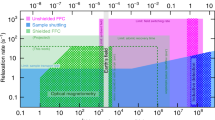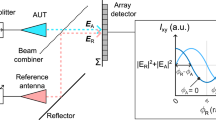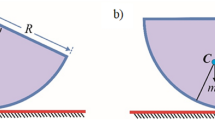Abstract
THIS communication lists observations made in Melbourne of some high-frequency transmissions and the very-low-frequency standard frequency transmission NPM from Hawaii on 19.8 kc/s during the American test series at Johnston Island in 1962. The July 9 explosion was in the megaton region but the October–November bombs were stated to be sub-megaton. Decreases in high-frequency signal-level which occurred were immediate, that is, less than the receiving system response time (about 1 sec). NPM phase shifts were advances, as measured by the retardation observed during the ensuing period until the normal phase pattern was re-established. In each case the advance occurred well within the time constant of the very-low-frequency receiving system (9 sec). In one case (November 1, 1962) NPM signal-level increased after the explosion.
This is a preview of subscription content, access via your institution
Access options
Subscribe to this journal
Receive 51 print issues and online access
$199.00 per year
only $3.90 per issue
Buy this article
- Purchase on SpringerLink
- Instant access to full article PDF
Prices may be subject to local taxes which are calculated during checkout
Similar content being viewed by others
Author information
Authors and Affiliations
Rights and permissions
About this article
Cite this article
TRAINOR, R., DERRICK, L. Effects of the U.S. High-altitude Nuclear Test Series of 1962 on Radio Propagation. Nature 201, 694–695 (1964). https://doi.org/10.1038/201694a0
Issue date:
DOI: https://doi.org/10.1038/201694a0



